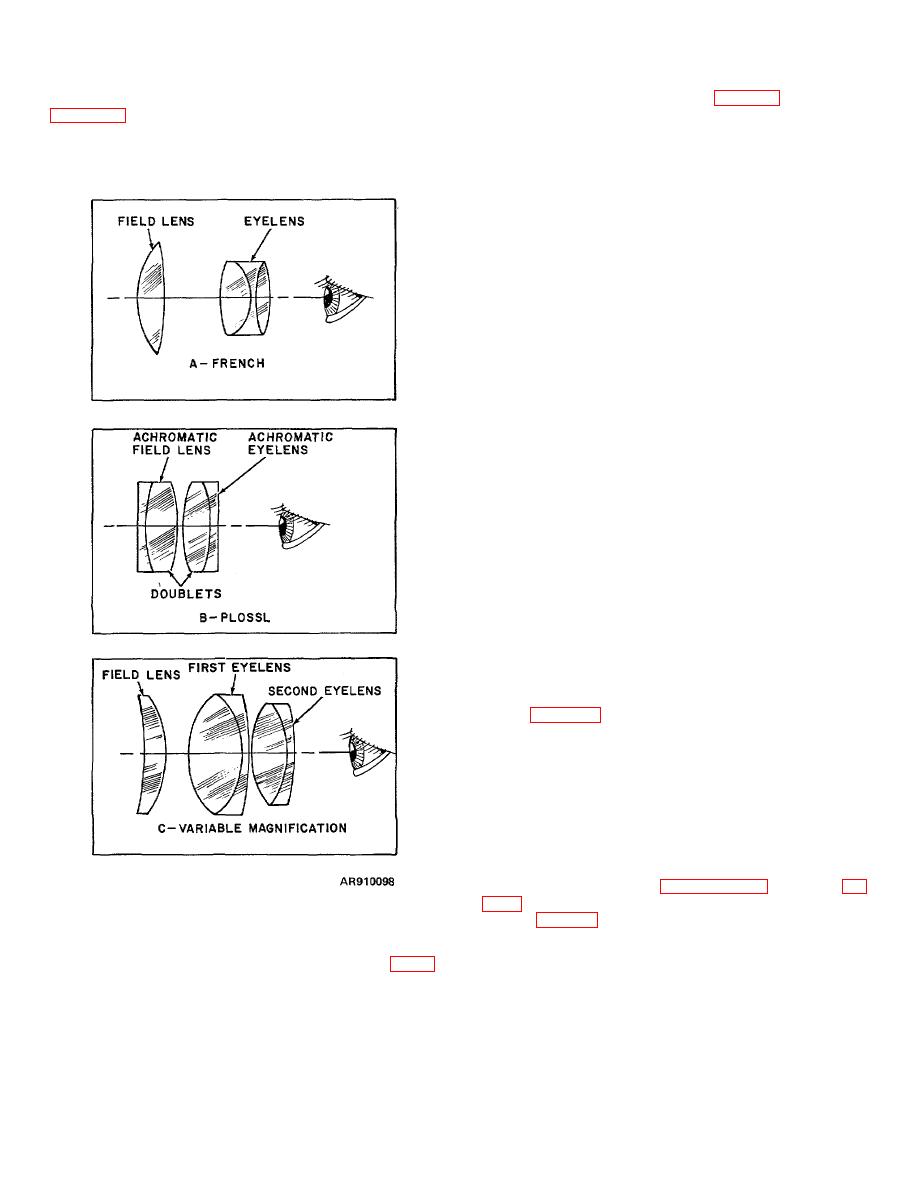 |
|||
|
|
|||
|
|
|||
| ||||||||||
|
|
 TM 9-258
l. French. This eyepiece is illustrated in A,
eye, the second eyelens (C, fig 4-8).
Variable
magnification is obtained by changing the distances
between elements of the eyepiece and the erecting
those of the orthoscopic eyepiece in the reverse order. It
system of the telescope. A collective lens in the body of
was generally indicated on French drawings furnished.
the instrument is often one of the elements of the optical
the United States of America during World War I.
system of such an instrument.
4-5.
Prisms.
a.
General.
(1) A prism, unlike a lens, is bounded by plane
surfaces and can be designed to deviate, displace, and
reflect light in numerous ways. The introductions of
prisms into optical instruments permits design variations
otherwise impossible.
(2) In fire-control instruments, it frequently is
desirable to bend the rays of light through an angle in
order to make a shorter, more compact instrument, to
bring the eyepiece into a more convenient position or to
erect an image. Plane mirrors are sometimes used to
change the angles of the light rays but the silvered
surfaces tend to tarnish and cause a loss of light which
grows more serious as the instrument becomes older. A
prism used for the same purpose can be mounted in a
simpler and more permanent mount, the angles of its
surfaces cannot be disturbed, and it can produce more
numerous reflection paths than would be practical with
mirrors.
(3) Optical prisms are blocks of glass of many
shapes especially designed and ground to permit them
to perform the various functions. They are used singly or
in pairs to change the direction of light from a few
seconds of arc (measuring wedges) to as much as 3600
(Porro prism system).
(4) When the incident rays strike the reflecting
surface of a prism at an angle greater than the critical
composed, the reflecting surface does not need to be
silvered. This surface must be silvered, to insure total
reflection, if the incident rays strike it at an angle less
than the critical angle.
b. Right-Angle Reflecting Prism. Depending
upon which reflecting surface is struck by the incident
ray, the right-angle reflecting prism will bend the light
rays through an angle of 900 or 1800. The manner in
which this prism reflects rays through an angle of 900 is
illustrated and described in paragraph 2-16e (A and B, fig
Figure 4-8. French, Plossl, and variable magnification
21a(1) (fig 2-43). When used to reflect rays through an
eyepieces.
angle of 900, the rays are reflected only once with the
m. Plossl.
This eyepiece employing an
result that the image is reverted with reflection in a
achromatic doublet for each lens is illustrated in B, figure
horizontal plane or inverted with the reflection in a
4-8. The converging components of the doublets face
vertical plane. When used to reflect rays through an
each other.
angle of 180, the rays are reflected twice and a
n. Eyepiece With Variable Magnification.
These eyepieces generally employ two eyelenses in
addition to the field lens. The forward eyelens is called
the first eyelens and the eyelens nearest the
4-11
|
|
Privacy Statement - Press Release - Copyright Information. - Contact Us |